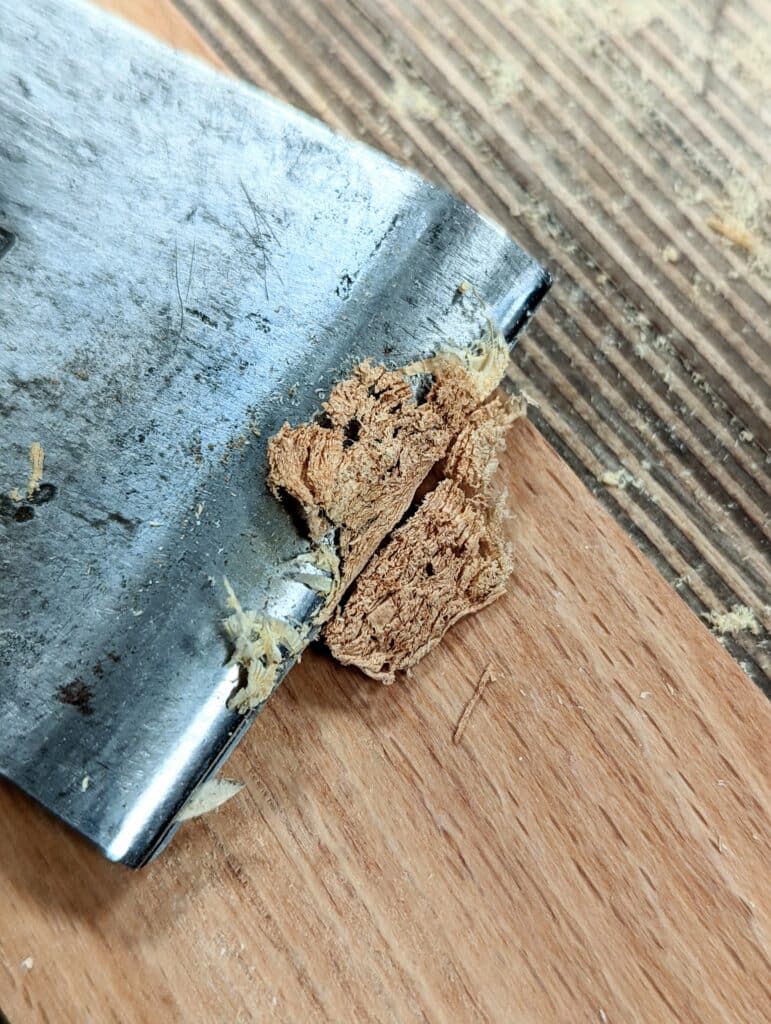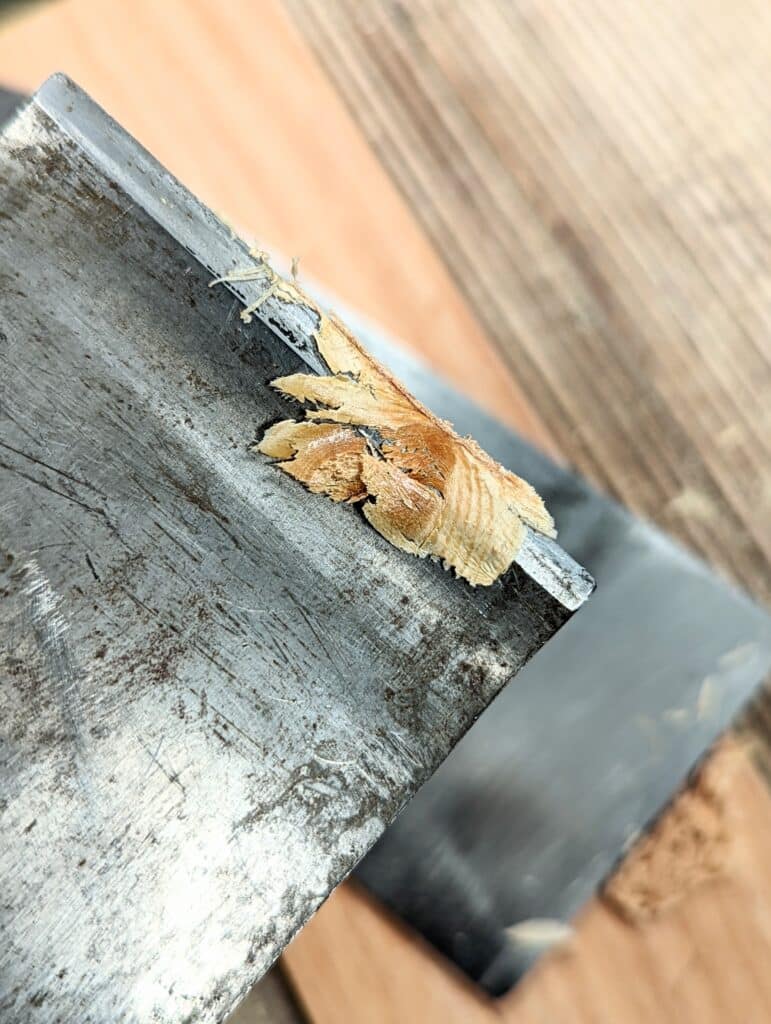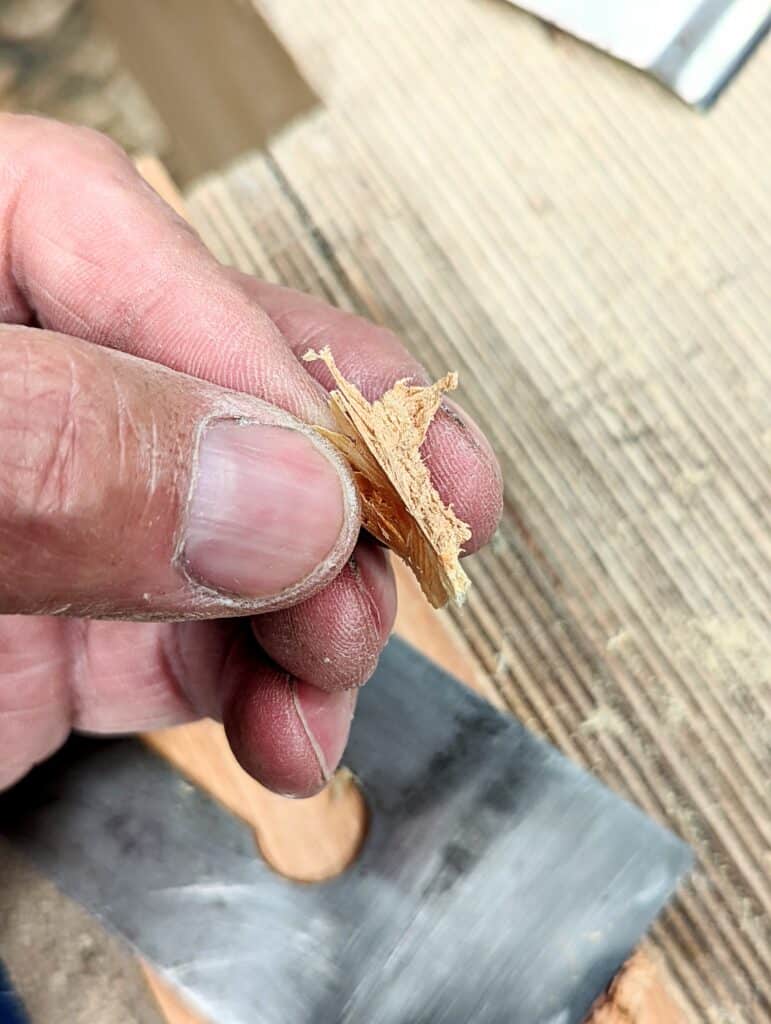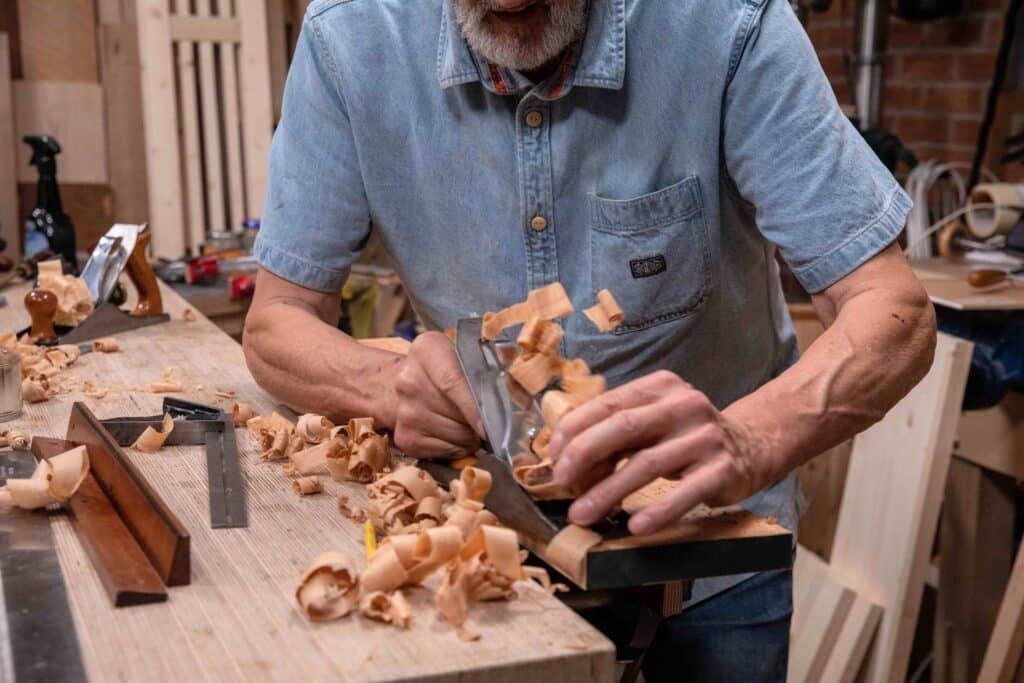Log Jams Happen
It happened in a flash
The grain crunched,
concertinaed into a cram-jammed
throat so tight it jarred me.
Would it happen with a heavyweight?
Some other make?
A bevel up?

York-pitch-frogged version?
Most likely one and maybe not the other
but then no one predicts its
happening in time to change
plane type to avoid it,
would they?

This phenomenon happens once a year
when the knot’s so hard at the start
of a plane stroke that the hardness
in its denseness parts the cap iron a thou’
from the cutting iron and can go no further.

The crumple begins like a five-car five-star pile-up
and you know to stop and not force a thing.
No more swipes and no more snipes.
You lift the lever on the lever cap
lift out the cutting iron,
part off the cap iron and there it is,
that dense and shiny, hard knot that started
the jam at the start of the plane stroke.
Bemused by the lot, you replace the parts
and swipe again and you are back in the zone
and the wood is smoothed to perfection.

Remember, life is just like wood!
It comes with knots in it!
If you can’t stand the knots,
stay out of the workshop!


Hi Paul, thanks for this post. I had it a few weeks ago when planing a large knot on a thin oak panel I had glued up. Because of the difficult grain on the whole panel I had set the cap iron very close to the cutting edge which worked well to surface the wood. I also had to take off the cap iron a few times in between and put it back in place because of the thin compressed knot shaving which had been pushed in. The rest went fine. While doing this I wondered – since I’m using wooden planes where the iron and cap iron (which are screwed together like on your metal planes) are held in place with a wooden wedge – if it could be one of the advantages of the lever cap on the metal planes to hold a very finely set cap iron better in place if the cutting edge encounters a shock like in this case when hitting such a dense knot. Or is there no difference regarding the holding capability? Also when I drive the wedge in to fix the iron in place the cap iron sometimes gets pushed beyond the cutting edge although the screw seems tight enough and the cap iron and cutting iron have good and even contact and the only explanation I can think of is that when it happens the friction between the wedge and the cap iron is higher at some point than between the cap iron and the cutting iron. Is this the way it is or could I work on either the wedge or the cap iron to prevent this from happening? Sorry to drift a bit away from your topic but it seems closely related to me.
Hi Florian. I had the same experience with a cheap, used coffin plane that I cleaned up.
After much annoyance, I found that using a flat washer under the cap pressure screw alleviated the problem of the cap iron moving with respect to the cutting iron.
Cheers, Alf
Hi Alf, thanks for your answer. It really only happens from time to time when I use a very fine setting of the cap iron. If the cap iron is in its normal position a bit further away from the cutting edge it doesn’t happen. The screw is fine. Its big head seems to distribute the pressure evenly.
Great poem. This happened to me! I thought the cap iron was not seated properly on the blade, so I spend a bit of time with it on the sharpening stones to ensure the perfect contact that I already thought I had. Turns out, it was probably as you describe here, and not my poor plane preparation!
Paul, do you think temperature and/or humidity affects whether the jam happens or not?
No, not at all.
Excellent poem with a valuable message. Thanks Paul!
Almost had one today on an oak knot but my freshly stropped blade and my oil rag can avoided it fortunately.
Your best post yet, and I’ve followed you for a long time, starting in your back yard making a workbench.
Not very encouraging when I have written 2,700 posts here!!!!
Just joking. Glad if it helped.
Perfect timing. I am having that very experience right now, not with wood, but with a foster child. Thanks for reminding me that no matter our skills or our experience, some things cannot be specifically predicted and we should expect that to happen on occasion and remember to get on with life when it does happen. One of the greatest things about poetry… We are each allowed to interpret it in our own moment. Thank you.
I’m wondering if the longer a piece of lumber (timber) is allowed to age, beyond just the ambient humidity allowable moisture content would effect the hardness of a live knot, as live knots seem to have an abundance of resin. My thought is that by longer storage the more the natural resins will be cured by catalytic reaction with O2 from the atmosphere.
My experience is that live knots remain live knots with all of the resultant resins filling any capillaries but in the highest extremes of heat, which I have never seen here in the UK, even with the current highs, I can see a little seepage happening. My experience of what I showed in the lig jam was nothing at all to do with heat though. It happens equally in mid-winter.
Life is just like wood / it comes with knots in it / if you can’t stand the knots / stay out of the workshop…
You cannot say more with less words. Exact. Absolutely exact.
I am familiar with the occurrence. Know of no way to predict it, once it has happened I might try an angled stroke or three. I’m always bothered that i’ll crack the back of the knot off and have to glue it back in.
You have described the ugly little annoying experience with brightness and beauty.
Thank you sir!
If you can’t stand the difficulties in life.. I dunno what the advice is.
Except to stop and compose yourself and keep going, if that was it.
Hi paul, noted this happens, but rarely. As you say once or twice a year. Nice to hear you explain why, but not an inconvenience at all in the beautiful working of a Stanley #4.
I have a question regarding jams between iron and cap iron… as it happens more often than I would like when planing. More when planing soft woods like spruce or fir than hardwood like oak, birch, beech and not only when there is knots (even if it happens more with knots.
I have checked that the lever cap is straight, the iron is straight and I have fettled the cap iron to be straight. When I connect the iron and the cap iron there is no gap and it looks very “solid” and I have no issue fixating the iron in the plane with the lever cap.
Still I get wood chips/shavings between the cap iron and the iron when planing and every 10 minutes I have to take the assembly apart to remove the chips lodged in there.
Could it be that the arched part of the cap iron is filed back too far to apply enough pressure on the iron? (It is not “flat” against the iron before tightening the screw but how much gap should there be initially?)
If that is the case is it possible to bend the cap iron to get more pressure on the iron? Do I have to find a replacement?
If anyone have any input I would appreciate it.
Is it possible that you have the whole of the filed underside where the cap iron meets the plane iron is parallel and without any gap on the underside of the hump side? The can open up the leading edge of the cap iron as the point I am talking about becomes the fulcrum point.
I have tried to get the angle of the leading edge of the cap iron so it presses evenly on the iron with no gaps but I’ll check again.
Thank you for your answer.